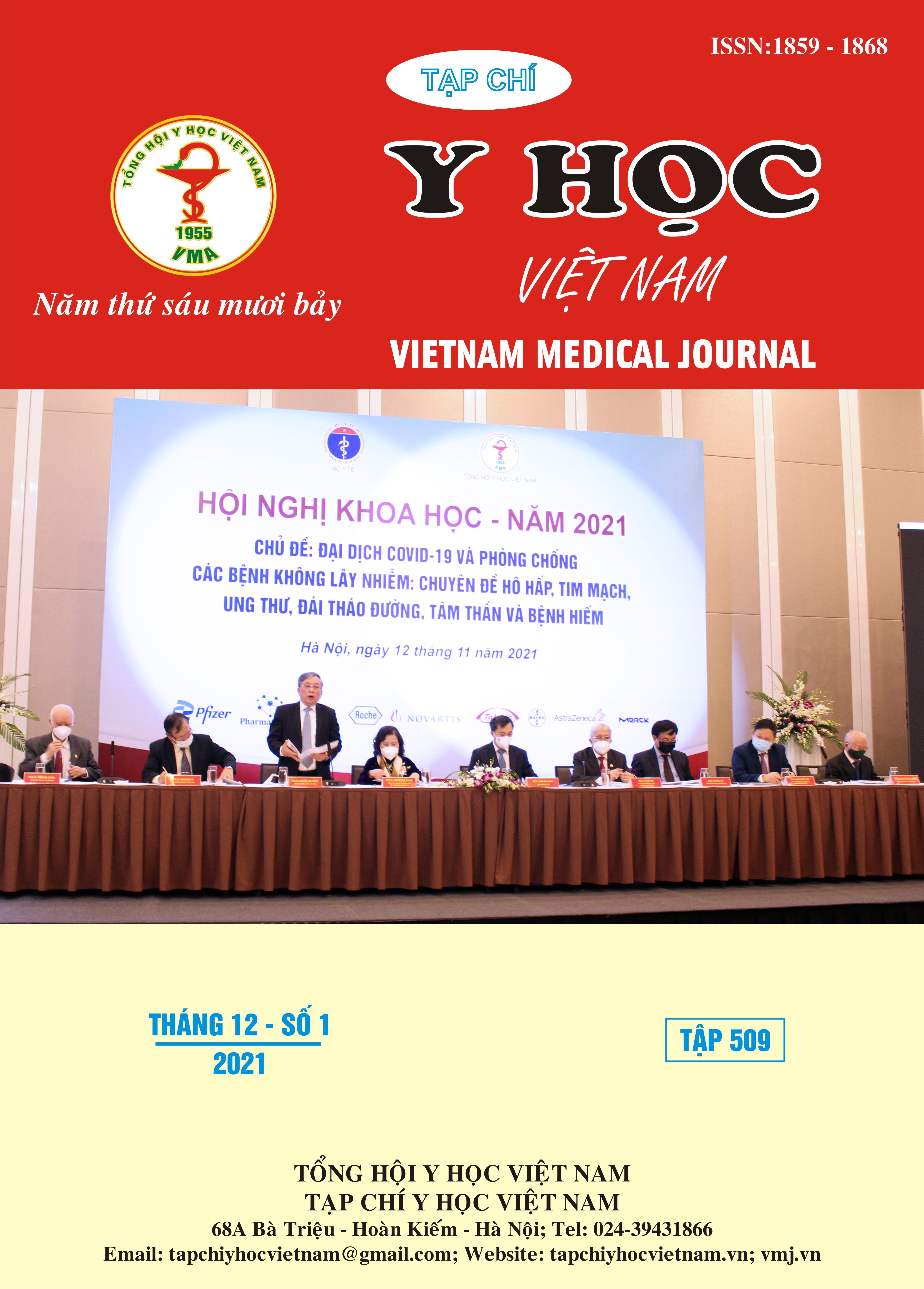EVALUATING THEACCURACY OF EFFICIENTNET IN COLON POLYP DETECTION AND DELINEATION
Main Article Content
Abstract
Objective: to evaluate the accuracy of EfficientNet algorithm in detecting colon polyps and to determine factors associated with the rate of missed polyp and false detection. Methods: Cross-sectional study. EfficientNet algorithm was validated on a set of 4000 still image (2000 images containing 2111 polyps, 2000 images with no polyp) by comparing with the ground-truth delineated by experts. Accuracy was assessed by sensitivity (Se), specificity (Sp), positivepredictive value (PPV) and negative predictive value (NPV). Regression models were used to determine factors related to the rate ofmissed polyp and false detection. Results: Se, PPV, Sp, NPV and accuracy were 97.60%, 94.44%, 94.25%, 97.52% and 95.93%, respectively. Multivariate regression analysis showed that cleanliness, polyp’s sizeand numberof polyps on image were significantly associated with the missedrate; cleanlinessand diagnosis were related to the false detection rate. Conclusion: EfficientNet algorithm had high accuracy, can be further developed using big data to support endoscopists during endoscopy or improve endoscopy and medicaltraining.
Article Details
Keywords
Artificial intelligent, EfficientNet, colonoscopy, polyp detection, polyp localization
References
2. International Agency for Research on Cancer (2020). The Globocan Cancer Obseratory. Country profile: Vietnam.
3. Lai E.J., Calderwood A.H., Doros G. và cộng sự. (2009). The Boston Bowel Preparation Scale: A valid and reliable instrument for colonoscopy-oriented research. Gastrointest Endosc, 69(3 Pt 2), 620–625.
4. Lui T.K.L., Hui C.K.Y. và cộng sự. (2021). New insights on missed colonic lesions during colonoscopy through artificial intelligence-assisted real-time detection (with video). Gastrointest Endosc, 93(1), 193-200.
5. Ozawa T., Ishihara S. và cộng sự. (2020). Automated endoscopic detection and classification of colorectal polyps using convolutional neural networks. Therap Adv Gastroenterol,13, 1756284820910659.
6. Seo J.H., Lee B.-I. và cộng sự. (2020). Adenoma miss rate of polypectomy-referring hospitals is high in Korea. Korean J Intern Med, 35(4), 881–888.
7. Valarini S.B.M.và cộng sự. (2011). Correlation between location, size and histologic type of colorectal polyps at the presence of dysplasia and adenocarcinoma. Journal of Coloproctology (Rio de Janeiro), 31(3), 241–247.
8. Wang P., Xiao X., Glissen Brown J.R. và cộng sự. (2018). Development and validation of a deep-learning algorithm for the detection of polyps during colonoscopy. Nat Biomed Eng,2(10), 741–748.


